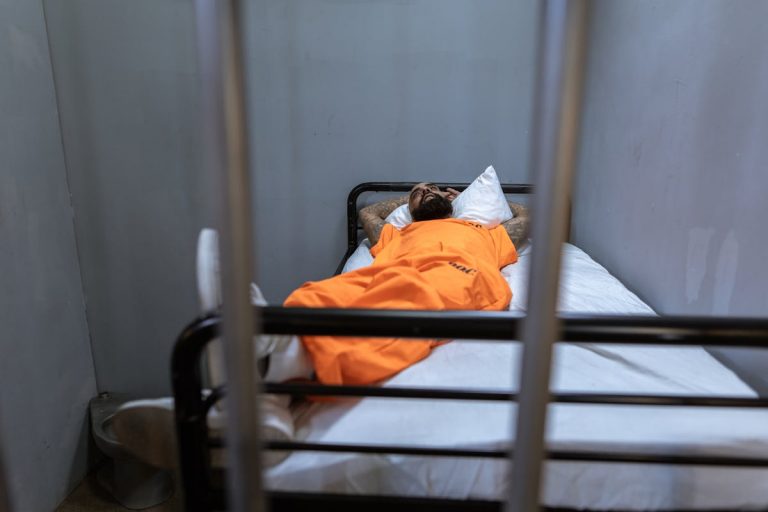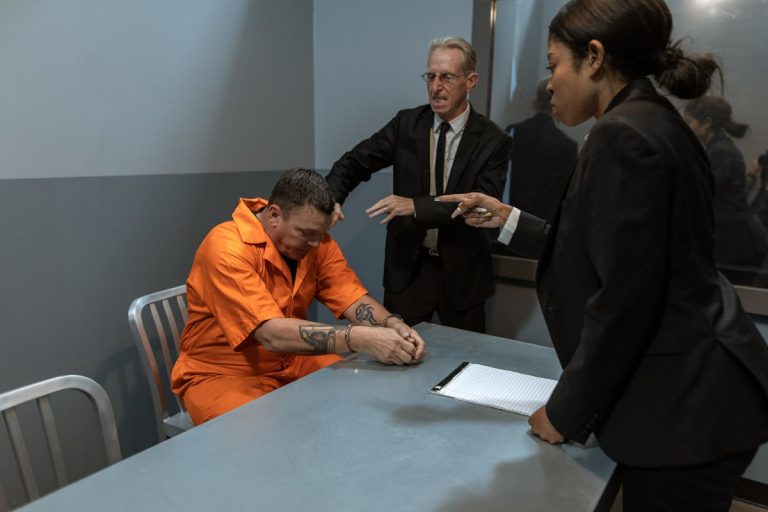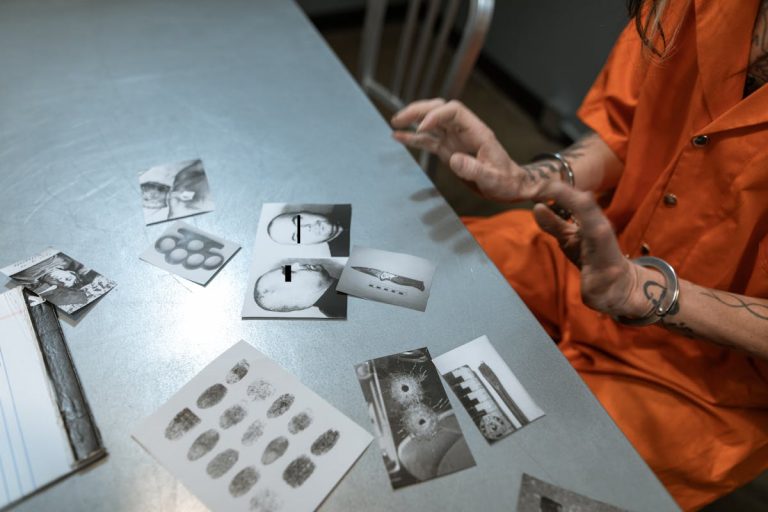Investigating sexual assault cases carries with it a unique set of challenges, fraught with emotional trauma, societal stigmas, and legal intricacies. The fear and shame often experienced by victims can act as a deterrent to reporting, while the preservation and interpretation of evidence requires a delicate balance of technical skill and sensitivity. Furthermore, societal misconceptions and biases can influence the trajectory of investigations, and the legal labyrinth can be an intimidating prospect for survivors. As we explore this topic further, these complexities underscore the pressing need for improvements in the investigative process and for a societal shift towards a more supportive and understanding environment.
Understanding Sexual Assault Crimes
The labyrinth of sexual assault crimes can often be complex and difficult to navigate. Understanding these crimes requires a thorough analysis of perpetrator psychology, as well as a robust strategy for community awareness.
Sexual assault crimes are not random or spontaneous; they are usually premeditated and often involve a perpetrator who has spent significant time studying their potential victims. This element of perpetrator psychology reveals a calculated and disturbing level of intention. Understanding this psychology can lead to proactive measures in identifying potential threats, enabling authorities to intervene before a crime is committed.
Community awareness, on the other hand, is an essential tool in the fight against sexual assault crimes. Knowledgeable community members can recognize signs of predatory behavior and potential danger, allowing them to act decisively and responsibly. In addition, community awareness campaigns can help dismantle myths surrounding sexual assault and reinforce the gravity of these crimes.
However, grappling with the intricacies of sexual assault crimes is a challenging task. It involves not only dissecting the mind of the perpetrator but also educating the community to create a safer environment for everyone.
Victim Trauma and Report Hesitation
While the understanding of perpetrator psychology and community awareness are significant aspects of addressing sexual assault, another complex dimension is the trauma faced by victims, often leading to hesitation in reporting the crime. Sexual assault victims endure an emotional aftermath that can be overwhelming, leading to trust issues and a sense of isolation. It is essential to understand this trauma and hesitation to enhance reporting resources and counseling options.
- Emotional Aftermath: Victims often grapple with intense emotional responses, such as fear, guilt, and shame, which can be debilitating and create barriers to reporting.
- Trust Issues: The assault can lead to distrust of others, making it difficult for victims to reach out to support systems or utilize available resources.
- Stigma Reduction: Society’s stigmatization of sexual assault victims often compounds their trauma, deterring them from reporting. Efforts must be intensified in stigma reduction to encourage victims to come forward.
Gathering and Preserving Evidence
Steering through the labyrinth of a sexual assault investigation, gathering and preserving evidence emerges as a vital challenge. The quality, integrity, and admissibility of the evidence in court greatly hinge on the effectiveness of evidence collection procedures and preservation techniques.
In the immediate aftermath of a sexual assault, collecting physical evidence can be a distressing experience for the victim. Yet, this process is paramount in building a strong case. It requires highly trained personnel who can not only collect and document evidence meticulously but also handle the situation with utmost empathy.
Preservation of evidence poses its unique set of challenges. From the time of collection to its presentation in court, the evidence must be kept untampered and uncontaminated. This necessitates robust chains of custody and stringent preservation techniques to prevent degradation or loss.
Without proper evidence collection and preservation, vital information that could lead to the identification and conviction of the perpetrator could be compromised. As a result, while steering through the complexities of sexual assault investigations, these aspects demand significant attention and resources. This will guarantee that victims receive the justice they deserve and perpetrators are held accountable for their actions.
The Role of Forensic Science
In the domain of sexual assault investigations, forensic science unfolds as a beacon of hope, offering irrefutable insights and aiding in the quest for justice. This critical field applies scientific principles to legal issues, particularly in the interpretation of physical evidence related to criminal incidents.
Forensic technology advancements have considerably bolstered the capability to analyze and interpret evidence, thereby strengthening the judicial process. The following encapsulate the importance of forensic science:
- DNA Analysis: DNA evidence is often the most convincing, providing a high level of certainty in identifying perpetrators. Modern advancements in DNA technology have improved accuracy and speed of analysis.
- Trace Evidence Analysis: Forensic scientists employ refined evidence analysis techniques to detect and interpret trace elements, such as hairs or fibers, which may link a suspect to a crime scene.
- Digital Forensics: In the digital age, electronic evidence can be pivotal. Forensic investigators retrieve and analyze data from computers, mobile devices, and other electronics to establish connections and timelines.
Forensic science therefore plays an integral role, aiding in the accurate interpretation of evidence and propelling investigations forward. It illuminates the path to justice, even in the face of complex and challenging obstacles.
Investigative Procedures and Protocols
Maneuvering the labyrinth of investigative procedures and protocols in sexual assault cases is a profound challenge, requiring diligence, precision, and a deep understanding of the law. The initial response to a report of sexual assault sets the tone for the entire investigation. Adequate training in interview techniques is crucial, as the survivor’s first interaction with law enforcement can greatly impact their willingness to participate in the investigative process.
Evidence collection is another critical aspect of the investigation. The meticulous process must be conducted with a high level of professionalism, ensuring all potential sources of evidence are explored while respecting the survivor’s dignity and rights. This includes a thorough examination of the crime scene, careful documentation, and proper preservation of physical evidence, such as DNA samples.
Investigators must adhere to standard protocols to maintain the integrity of the investigation, while balancing the need for a thorough inquiry with empathy and sensitivity towards survivors. The goal is to create an environment that encourages survivors to share their experience, facilitating the collection of essential information and evidence. This intricate process underscores the importance of well-established investigative procedures and protocols in sexual assault cases.
Societal Biases and Misconceptions
The societal biases and misconceptions entrenched in our culture greatly impact the landscape of sexual assault investigations. These biases often manifest as a pervasive victim-blaming culture and a widespread misunderstanding of consent, both of which serve to complicate the pursuit of justice. Acknowledging and addressing these obstacles is an essential step we must take to foster a more just and empathetic societal response to sexual assault.
Victim-Blaming Culture
Shrouded in societal biases and misconceptions, victim-blaming culture presents significant challenges in the investigation of sexual assault cases. This culture not only vilifies the victims but also hampers their empowerment and the needed societal changes.
- Victim-blaming culture perpetuates a narrative that places responsibility on the victim, not the perpetrator. This not only exacerbates the trauma for victims but also indirectly absolves perpetrators of their actions, creating a cycle that is difficult to break.
- This culture also hinders victim empowerment. By making victims feel responsible, it affects their willingness to come forward and report the crime. This results in countless cases of sexual assault going unreported, making it harder for investigators to deliver justice.
- The culture also obstructs societal change. It hinders the development of policies and systems that aim to protect victims of sexual assault. As long as victim-blaming remains a societal norm, these changes will be slow to take effect.

Misunderstanding Consent
In our society, a pervasive misunderstanding of consent has contributed to the complexity and challenges of investigating sexual assault. This misunderstanding stems from societal biases and misconceptions, often rooted in cultural norms, traditional gender roles, and lack of accurate information. As a result, the investigation process becomes more arduous, and victims often experience additional trauma.
A key factor in mitigating this issue is consent education. By providing precise, thorough information about what constitutes consent, we can challenge harmful misconceptions and promote healthier, more respectful interactions. Consent education should stress that it is an ongoing, dynamic process involving clear, voluntary, and enthusiastic agreement to engage in specific sexual activities.
Additionally, improving communication skills is essential. The ability to articulate one’s boundaries, desires, and comfort levels, and to respect those of others, is a fundamental aspect of consent. This can help to guarantee that all parties are on the same page and reduce the likelihood of misunderstandings that can lead to harm.
Addressing the misunderstanding of consent is not a quick fix, but a societal shift that requires time, commitment, and collective effort. Yet, it is a crucial part of improving the investigation and prosecution of sexual assault cases, and ultimately, fostering a culture of respect and equality.
Legal Hurdles in Prosecution
Shifting from societal biases, we now approach the legal complexities associated with prosecuting sexual assault cases. These include ensuring victim’s rights and protections, confronting evidentiary challenges, and maneuvering the intricate terrain of prosecution strategies and pitfalls. A thorough understanding of these hurdles is imperative to fair and effective legal proceedings in sexual assault cases.
Victim’s Rights and Protections
The journey to justice for sexual assault survivors is often met with a labyrinth of legal hurdles. These challenges are multifaceted, encompassing the domain of both psychological trauma and legal complexities. Yet, the significance of victim’s rights and protections cannot be understated.
In the pursuit of justice, the role of victim advocacy is paramount. Advocates provide survivors with invaluable support, aiding in traversing the legal system. Their assistance can be instrumental in understanding and asserting legal protections available for victims.
- Confidentiality Protections: Victim’s communication with their advocates are often privileged, providing a safe space for disclosure without fear of public exposure.
- Protection Orders: Courts can issue protective orders to guarantee the safety of victims, prohibiting the accused from contacting or approaching them.
- Victim Compensation: Victims have the right to seek compensation for their emotional and physical trauma. This can aid in recovery and in some cases, provide a sense of closure.
Victim’s rights and protections serve as a beacon of hope amidst a sea of legal complexities. However, their effectiveness hinges on victims’ awareness and the prompt, empathetic response of law enforcement and legal institutions. Guaranteeing these protections and rights are upheld is essential in the pursuit of justice.
Evidentiary Challenges
Despite the potentially comforting assurance of victim’s rights and protections, legal challenges persist in the prosecution of sexual assault cases, particularly in the domain of evidentiary concerns.
Evidentiary standards in sexual assault cases require a high level of scrutiny. The credibility of the witness, usually the victim, is subject to intense examination, often adding to their trauma. Forensic limitations further complicate matters; time-sensitive evidence can be lost due to reporting timelines, while consent documentation is often non-existent in these personal encounters.
Privacy concerns, particularly regarding digital evidence, add another layer of complexity. The increasing use of technology in everyday life means that digital evidence, such as text messages or social media interactions, is becoming more critical in these cases. However, the invasion of privacy necessary to access this evidence can be a contentious issue.
Expert testimony, often from psychologists or medical professionals trained in trauma-informed practices, can greatly influence the outcome. Yet, due to case backlogs, these experts are often overburdened, potentially compromising the quality of their testimony.
Prosecution Strategies and Pitfalls
Maneuvering the labyrinth of legal hurdles in the prosecution of sexual assault cases requires strategic planning and execution. Prosecutors face a myriad of challenges including victim cooperation, defense strategies, and jury perceptions, all of which must be navigated with sensitivity and precision.
Prosecutorial discretion plays a key role in case management, determining how resources are allocated and guiding the direction of the case. Yet, this discretion is often scrutinized, as decisions to proceed can hinge on factors like victim cooperation—a fraught issue given the emotional toll victims undergo during investigations.
- Victim cooperation: This is fundamental for building a robust case. However, the trauma associated with sexual assault can sometimes hinder victims from fully participating in the legal process.
- Defense strategies: These can range from challenging the credibility of the victim to using legal representation to exploit procedural loopholes, making it imperative for the prosecution to anticipate and counter these tactics.
- Plea negotiations and sentencing considerations: These are critical stages. The prosecution must carefully weigh the potential for a successful conviction against the possibility of a more lenient sentence through a plea deal.
The complexity of these challenges underscores the importance of thorough strategies in the prosecution of sexual assault cases.
Improving the Investigation Process
In light of ongoing debates surrounding sexual assault investigations, there is a pressing need for significant improvements in the investigation process. Enhancements should focus on elements such as victim support, training programs, investigative technology, community outreach, and trauma-informed practices.
Victim support should be at the forefront, with a strong emphasis on understanding the trauma victims undergo and tailoring the investigative process accordingly. This requires the implementation of sensitive, trauma-informed practices that prioritize the well-being of the victims.
In addition, training programs for investigators should be enhanced to guarantee a thorough understanding of the psychological implications of sexual assault. This training should also extend to the use of advanced investigative technology, enabling investigators to gather evidence more efficiently and meticulously.
Furthermore, community outreach and interagency collaboration are essential for creating a supportive environment that encourages victims to come forward. This collaboration should extend to case management, where all involved agencies work together to guarantee a seamless process, minimizing the stress for the victim.
Frequently Asked Questions
What Mental Health Resources Are Available for Sexual Assault Investigators?
Various mental health resources, such as trauma support services and programs fostering emotional resilience, are readily available for individuals engaged in intense professions, ensuring their psychological well-being amidst challenging occupational circumstances.
How Does the Justice System Support the Rehabilitation of Sexual Assault Perpetrators?
The justice system supports rehabilitation of sexual assault perpetrators through measures promoting perpetrator accountability and restorative justice, such as mandatory counseling, offender education programs, and victim-offender mediation sessions, aiming to prevent future offenses.
What Training Do Law Enforcement Agencies Provide for Handling Sensitive Cases Like Sexual Assault?
Law enforcement agencies often provide their personnel with training in victim advocacy and trauma-informed techniques. This specific education equips them to handle sensitive cases like sexual assault with empathy, professionalism, and meticulousness.
Are There Programs to Educate the Public About the Reality of Sexual Assault?
Yes, numerous programs exist to heighten public awareness on sexual assault realities. These community outreach initiatives provide education on consent, bystander intervention, and support for victims, fostering a more informed and empathetic society.
How Does Media Coverage Influence the Publics Perception of Sexual Assault Cases?
Media coverage greatly influences public perception of sexual assault cases through media bias, victim portrayal, sensationalism effects, and reporting accuracy, which collectively shape public empathy and contribute to stigma reduction.





